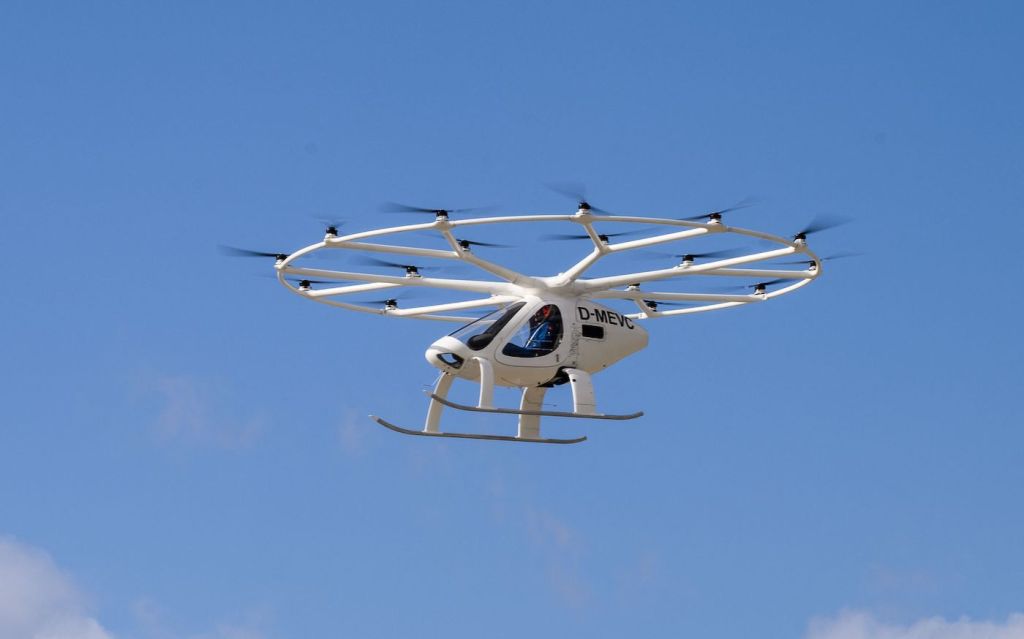Ben Tigner
It’s likely that if you hadn’t previously heard of eVTOLs (electric vertical takeoff and landing aircraft), they might have made their way onto your radar last year.
Between the billions of dollars in capital, SPACs and test flights, there were countless companies touting their newest developments and technological milestones bringing us one step closer to the commercialization of air taxis.
The billions of dollars raised by eVTOL companies last year mean one thing for 2022 — massive growth. I’ve been working in the aircraft development space for decades, but 2021 was different.
I’m keeping my eye on four trends for the next two years that will drastically change the way these companies operate and influence how interested entrepreneurs and investors can participate in the development of the burgeoning eVTOL ecosystem.
The competitive landscape of the eVTOL aircraft market is going to expand
This one is a bit of a no-brainer, but this is a hot space, and every eVTOL vehicle developer is going to try to differentiate itself as much as possible. This will create a heightened competitive landscape among these companies, as well as future operators and infrastructure and service providers.
However, this is a good thing. Given the large addressable market of urban air mobility and the lead times required to stand up such a complex operation, the diversification and competition will benefit the entire space, as opposed to just one or two companies.
As an investor, I would be keeping a solid eye on companies that consider what urban air mobility will look like in reality as opposed to experimental prototypes. When I say reality, I’m talking about some degree of scale and maturity — commercial eVTOLs flying paying riders at scale in a long-term market.
Unlike commercial jets, which are indistinguishable to the average airline passenger, most eVTOLs have strikingly different designs. What performance differences will result from these design differences? What economic factors will be important as the industry scales once the glitz and glamour of early demonstration flights have passed? Why will riders and operators choose certain eVTOLs over others?
At this point, experimental prototypes pay little attention to real-world demands like payload and weather condition reliability, but if riders are going to save time getting to the airport for a long-distance flight, they need to be able to bring their luggage, and they need to count on the eVTOL to fly in the same weather conditions that jets do.
Mainstream attention is increasing
As I hinted at earlier, 2021 was likely the first time most people really noticed eVTOLs. However, most of the attention is still focused heavily within the aviation and tech audiences. This year will bring several prototypes and trial flights across the landscape of competitors. Test flights and flying vehicles are going to draw the attention of not only mainstream media but also the general public, who will be able to fully visualize what air taxis will provide for them. I expect that eVTOL news will become a part of our daily news digest this year, and continued investment will follow.
While eVTOL manufacturers have received most of the attention and capital to date, I would encourage investors and those looking to break into the space to pay attention to the rest of the urban air mobility ecosystem: aircraft maintenance and repair organizations, parts suppliers, air traffic control and navigation providers, flight operators, demand aggregators and mobility-as-a-service platforms.
The operation of these vehicles will be quite different from both ground mobility and today’s airlines and airplane charter operators, and, as a result, urban air mobility service networks will be quite different as well. Expect early movers in these businesses to benefit from their foresight and investment. They are an absolute necessity in the industry and can make or break how an eVTOL operates in practice.
The operation of these vehicles will be quite different from both ground mobility and today’s airlines and airplane charter operators, and, as a result, urban air mobility service networks will be quite different as well.
An emphasis on noise pollution
While eVTOLs will improve aviation’s carbon footprint, we must also consider their noise profiles. Undoubtedly, the safety, affordability and convenience of eVTOLs will foster widespread adoption, which is inherently a good thing, but the urban environments where these aircraft are most useful are extremely noise sensitive.
Thus, utilization will ultimately depend on noise.
While eVTOLs generally will be quieter than today’s helicopters, they will not be silent. As investors start to narrow in on the companies that have the most long-term staying power, I’d recommend they focus on eVTOL companies that emphasize the quietness of their vehicles over others, as that will be a major selling point.
Sustainable travel at the forefront
It’s no secret that climate change is drastically affecting our planet, and aviation, like so many industries that rely on carbon-based fuels, can make a difference by reducing that reliance. Like noise pollution, the messaging around sustainable vehicles and the benefit of electric air taxis as a new form of ride-sharing will be at the forefront for all eVTOL companies, especially since urban traffic congestion is such a large contributor to air pollution. For anyone trying to break into this space, sustainability cannot be ignored.
Overall, I want to emphasize that competition within the eVTOL space is incredibly exciting and important, as it signals the industry’s coming of age. The scale and infrastructure needed to implement urban air mobility networks are massive undertakings, and we will all need to lean on one another to make it happen. The important differences between eVTOL designs allow for diversification and healthy competition, but I expect every company to be racing to Federal Aviation Administration certification. There is light at the end of the tunnel!































Comment